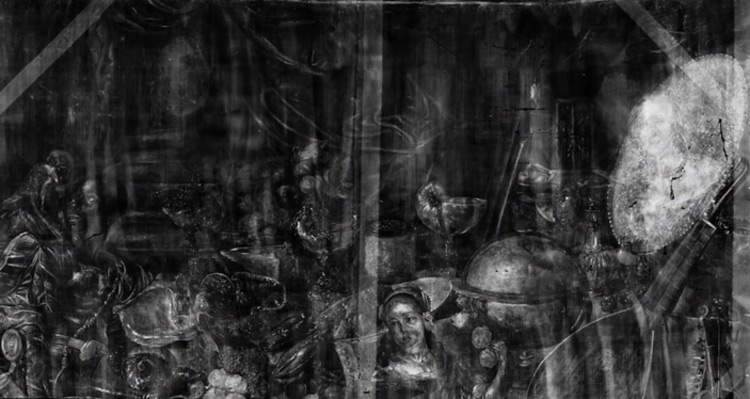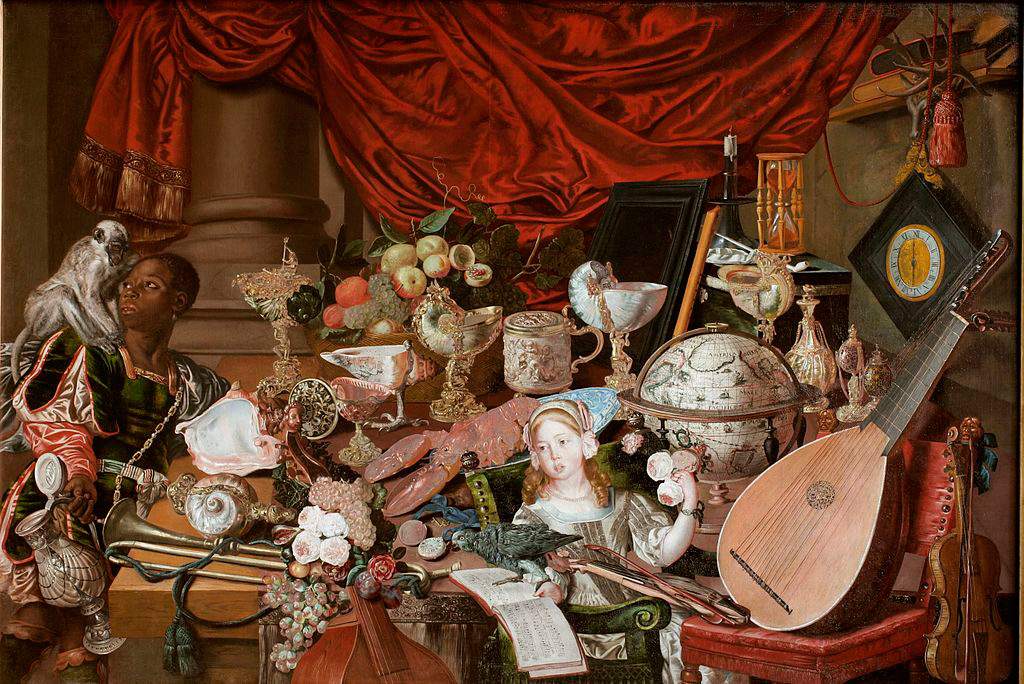For nearly four centuries, a girl remained hidden inside the so-called Paston Treasure, a large painting commissioned by Sir William Paston from a Flemish itinerant painter in the 17th century (around 1670). It is a large oil painting (246.5 x 165 cm), now housed at the Norwich Castle Museum in England, and is one of the earliest examples in the history of English art to depict the opulence and wealth accumulated by the noble landed families of the time.
The painting was investigated by Italian researchers from the National Laboratories of the South of the INFN (National Institute of Nuclear Physics) and theInstitute for Archaeological and Monumental Heritage (IBAM) of the CNR, who set off for England (the painting, given its size, cannot be moved) and scanned the work using an X-ray instrument called LANDIS-X: they thus discovered the presence of a female figure, which could be a member of the Paston family or an allegorical figure, located in the upper right corner at the wall clock. LANDIS-X made it possible, for the first time, to highlight its pictorial details (face, hairstyle and clothing).
Claudia Caliri of INFN’s National Southern Laboratories explains, “Despite the important size of the painting, the real-time imaging technique of the LANDIS-X mobile scanner made it possible to fully document the work.” “Through the images of the elemental distributions obtained during the measurements, it was possible to know the nature of the pigments used by the artist and to study his creative process.”
Paolo Romano of CNR-IBAM, creator of the scanner and responsible for the MA-XRF measurements on the Paston Treasure, says, “LANDIS-X is the only mobile ultra-rapid scanning X-fluorescence system based on real-time technology, capable of providing conservators and art historians with live images of the distribution of pigments on the paint surface at very high resolution (up to 30 microns). The results obtained made it possible to study the painting process of the Dutch itinerant artist and to verify the state of conservation of the work.”
“These extraordinary images made by Italian researchers allowed us to completely reconstruct all the pictorial layers and bring to light the original composition. The images highlighted the pictorial details of a woman, such as her face, the fact that she wore a red dress and a hair style adorned with decorative leaves,” stresses Francesca Vanke, Conservator and Curator of Decorative Arts at the Norwich Castle Museum, where the painting is preserved.
Thanks precisely to the acquisition of these images, a short documentary entitled “The Paston Treasure: A Painting Like No Other,” which, through a technical analysis and images provided by our researchers, explains to the public how the work was created by helping to solve the fascinating puzzles and afterthoughts that the artist’s hand scattered throughout the painting. The work is also featured in an exhibition that opens today, June 23, 2018, at the very Norwich Castle Museum.
In the images: top: Paston Treasure in X-ray (with the female figure on the right). Bottom: Flemish painter, The Paston Treasure (ca. 1670; oil on canvas, 246.5 x 165 cm; Norwich, Norwich Castle Museum)
 |
 |
| Italian researchers discover a female figure in Norwich's spectacular Paston Treasure |
Warning: the translation into English of the original Italian article was created using automatic tools. We undertake to review all articles, but we do not guarantee the total absence of inaccuracies in the translation due to the program. You can find the original by clicking on the ITA button. If you find any mistake,please contact us.